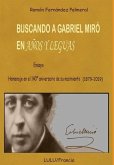This issue of the Mexican journal of photography and culture "Luna Cornea"--published in book form--examines in detail the prolific career of the iconic Mexican cinematographer, portraitist and still photographer Gabriel Figueroa Mateos (1907-1997). Best known for his cinematographic work with Emilio Fernandez, Luis Bunuel, John Ford and John Huston--he filmed Ford's famous 1946 version of "The Fugitive" and received an Academy Award nomination in 1966 for his work on Huston's "The Night of the Iguana"--Figueroa Mateos' oeuvre consists of more than 200 films, including several masterpieces of Mexican cinema. "A builder of stark and ominous shadows, Figueroa Mateos' iconography often featured Mexican revolutionaries and bandits in broad-brimmed sombreros, framed by cactus, vast skies and threatening clouds," according to "The New York Times," who quoted Figueroa Mateos after he won Mexico's esteemed National Arts Prized in 1977, "I am certain that if I have any merit, it is knowing how to make good use of my eyes, to guide the camera in its task of capturing not only colors, lights and shadows, but the movement of life itself."
The vision of Gabriel Figueroa Mateos (1907-1997) is not limited exclusively to his cinematographic work, which consists of more than two hundred films and includes several of the masterpieces of the Mexican movie industry. His multidisciplinary and iconographic production was decisive in the construction of the visual imagination of post-revolutionary Mexico. This issue number 32 of Luna Córnea, published in book form by RM, examines in detail the prolific career of Gabriel Figueroa as a creator of still and moving images -portraitist, still photographer, cinematographer- and as an emblematic figure in the dream factory that provided several generation of Mexicans with entertainment and their "sentimental education."
The vision of Gabriel Figueroa Mateos (1907-1997) is not limited exclusively to his cinematographic work, which consists of more than two hundred films and includes several of the masterpieces of the Mexican movie industry. His multidisciplinary and iconographic production was decisive in the construction of the visual imagination of post-revolutionary Mexico. This issue number 32 of Luna Córnea, published in book form by RM, examines in detail the prolific career of Gabriel Figueroa as a creator of still and moving images -portraitist, still photographer, cinematographer- and as an emblematic figure in the dream factory that provided several generation of Mexicans with entertainment and their "sentimental education."







